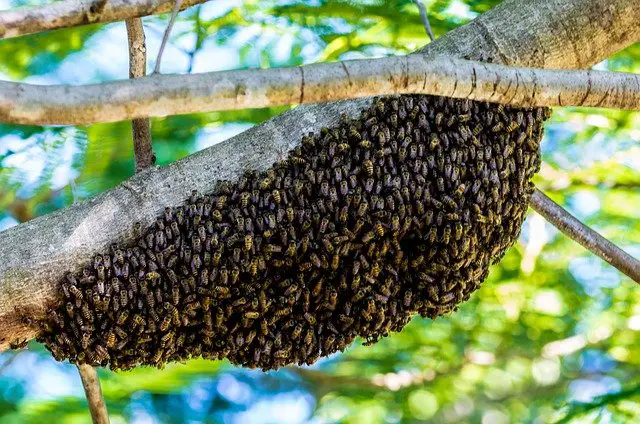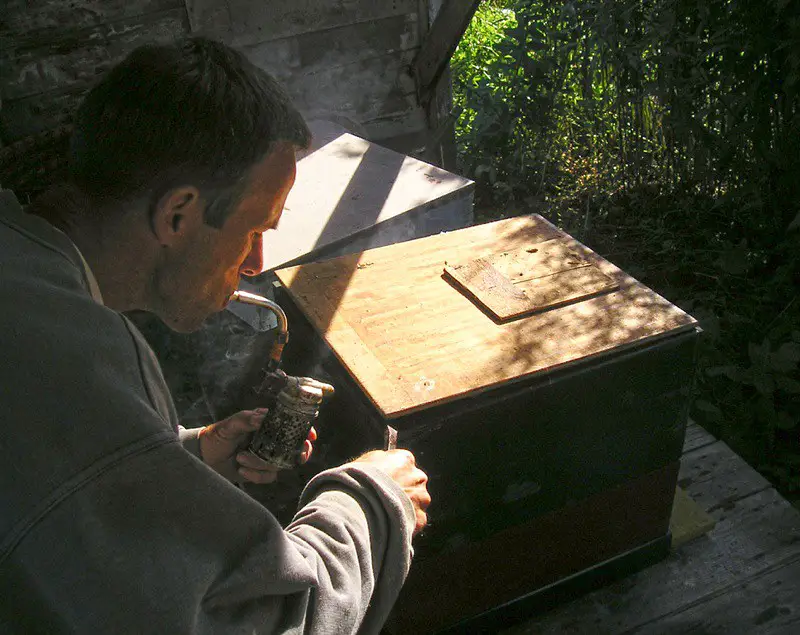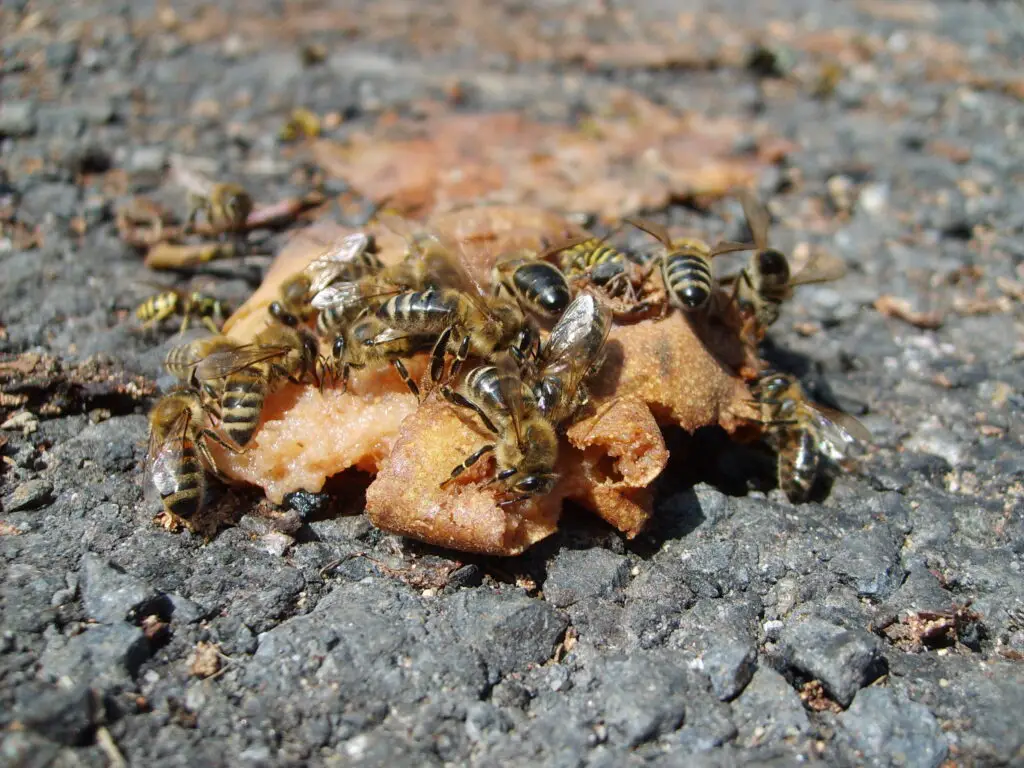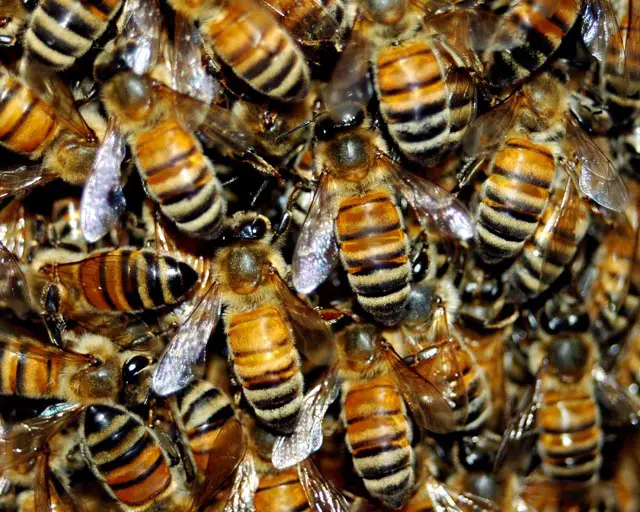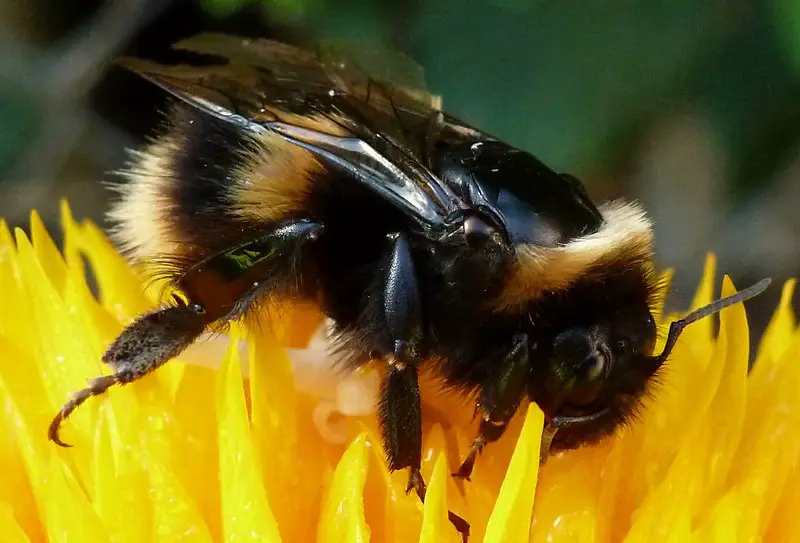Humane beehive removal
Hardworking honeybees may not be your favorite houseguests, but with the help of a local beekeeper, you may be able to remove the beehive without killing the bees. Their critical environmental role in pollinating crops and threatened populations means that a healthy beehive should always be left to thrive. If you see a swarm of bees near your home, you might be wondering what’s a humane way to get rid of a beehive. But before you take action against these busy bees, you should know that most bees are beneficial pollinators. In addition, many of the fruits and vegetables you eat are made possible by hardworking beehives.
When removing an apiary hive, it is always best not to threaten the bees. Most honeybees only sting when their hive or queen is threatened. By keeping your distance, you reduce the chances of being stung. A swarm of bees will typically be found surrounding their queen in a branch, bush, or post (at the top of a doorpost). Keeping away from this area will reduce the risk of being stung.
Beehives and swarms outside will be extremely aggressive and should be dealt with carefully. It is important to stay away and stay indoors to avoid disturbing or getting stung by a bee. If there is a beehive inside the home, isolate the area and contact a professional.
Secure the area around the hive, so the bees can’t leave unless you let them out. Next, you need to identify where they entered and remove them safely. There are several methods of removal that you could try before choosing one that suits you.
It’s much easier to have a beekeeper remove the hive for you. Bee removal is difficult for several reasons, including the fact that many commonly sold insecticides are banned for beehive removal or bee control by the EPA. Therefore the use of such products to get rid of beehives is illegal. With bee traps, you wind up needing to get rid of a container full of angry bees. Moreover, your trap may not capture all of the bees, and the rest of the hive will remain a problem.
If the bees in your yard are honeybees, a local beekeeper could likely come to your rescue. They may charge a fee for their time and expertise. And if you are really lucky, a beekeeper might remove the beehive at no cost. For some bee species or large indoor hives, getting rid of beehives may require contacting a pest management professional.
It is important to make sure that there are no bees left behind after a beehive extraction. Ensuring you finish off the job by cleaning up and repairing your home walls left pierced by bee invasion will keep other pests from occupying the space.
Following the above steps, you can ensure that any beehives stopping by your house won’t remain there for long. Seek help from a bee control professional if you have any questions regarding the removal process.
How to remove a beehive from your home?
Extracting honeybees from structures is entirely different than collecting swarm clusters. Beehives only produce the made structures to house their queen once they have found a life high in human structures. For example, when there are merely a few pounds of adults bees actively creating combs, then beekeepers can gather them relatively easily. However, when that well-established colony has ounces of adult and developing bees, then you will have much harder to find them. The first step is finding out where the beehive is located.
Honey bees can be killed in place using pesticides that are labeled and licensed to do so, and although this method often has undesirable consequences, it is one way to remove a beehive from your home. Killing honeybees to get rid of a beehive should be only a last resort measure.
If you remove a colony of bees before it’s established, you should still think carefully about removing their nest. Unattended brood left behind can rot and become odorous, while unattended honey stores can become fermented. This will cause the honey to seep through drywall, leading to large amounts of cleanup and expensive replacement material. In addition, removing the colony with pesticides will then contemplate the honey, wax, and dead bees, making it hazardous waste.
If you need to remove a beehive from your home, one option is to eliminate the bees without harming them. You can do this by tapping the walls and listening for the colony humming. Some people use stethoscopes to find this spot, while others drill small holes in the walls and insert wires to locate the nest’s perimeter. One method to take honey bees and their combs out of that nesting spot is by opening up a fairly large hole in part of your home.
There are a wide variety of methods to remove bees from one’s property. Beekeepers can choose to remove the bees and their honeycombs peacefully by gently sucking them up into a vacuum or through other techniques that range from chemical-laden to productive. Outside of physical removal, it is also required for homeowners always to maintain public bee awareness; different members of the community should be willing to carry out certain tasks such as spraying water on swarms. If you fear stings, you.
If you need help with beehive removal, you can get in contact with beekeepers to ask for help. Remember, it is best to call pest control if you cannot remove a beehive from your house.
How to prevent beehive invasions?
After removing beehives, holes in a building should be sealed to eliminate future invasions, and cavity spaces in the building should be filled with expandable foam.
Use a vacuum or an aerosol spray to eliminate any remaining bees after the colony has been pulled apart. Be careful not to over-pesticide, as this can lead to a home infestation.
Tips for preventing beehive invasions
It is fairly easy to remove a swarm cluster but can be very difficult to remove bees in a cavity. Beehives around the world, including the United States, are currently experiencing bee invasion problems. It may be easy for beekeepers to collect swarms for free, but it has always been difficult, if not near impossible, to get them to look for problem areas in established colonies without charge. For some time now, there has been concern about poorly managed swarms colonizing areas with Africanized bees.
How to find a beehive removal company?
What do I need to know if I find a beehive? First, you will need to contact a beekeeper, or occasionally a beehive is exterminated. Beekeepers may be listed on social media sites. You could also search for a beehive removal service on the web. Can you be allergic to honeybees? Some people believe that only those who are allergic to honeybees are in danger. But that’s not true. A beehive can be dangerous for anyone.
County agricultural commissioners also have records of beekeepers registered in their counties. Registered beekeepers are confidential, but professionals can often contact an experienced beekeeper to help with beehive removal by contacting these agencies.
When arranging a beehive removal, get an understanding of what will be done. For example, will the bees simply be killed in place – not good for pollination duties – or will the cavity be opened, cleaned out of bees and combs, filled with insulation, reclosed along with all possible entrances, and refinished?
Discover how to avoid future beehive invasions and what to do if you encounter a swarm. It is best to consult a contractor and beekeeper for advice on how best to handle the swarm; someone who keeps bees and does contracting work can be the most knowledgeable.
Beehives and swarming bees
Swarming bees are much less likely to attack than an established beehive. Therefore, they shouldn’t pose much danger if left undisturbed but will sting if provoked.
Bees build their colonies out of mostly wax and used paper but will sometimes make a mess of a building by creating holes through the sheetrock. They also expand their space by softening the material with water.
The need for managing bee swarms or hives depends on the location and whether the bees are establishing a beehive. Swarms moving on without establishing a hive aren’t a concern. However, bees creating a colony in a home need to be removed by a beekeeper or bee control professional.
A swarm cluster—correctly termed a swarm when it’s not flying—is a transient species and, therefore, typically can’t be managed. Whenever the beehive spots the appropriate new nest site, the swarm will fly off their location. However, the bees usually leave some residual at their clustering place, so appearances of additional swarms at that same location are to be anticipated within the future.
Swarm clusters can easily be removed but are more difficult when it’s difficult to reach. If you come across a cluster, call a beekeeper who can remove it without danger and exact the swarm to last the winter, so it doesn’t swarm again and harm your house or people.
How to remove carpenter bees?
I don’t know if any of you have ever had to deal with these guys. If you have, then you would know. They look like an ordinary bees THAT JUST ATE A HORSE. I don’t know how these bees fly around because they look too big and fat to be able to fly. But that is not what makes these bees so special. It is their ability to DRILL A PERFECTLY ROUND HOLE in the eaves of your home, garage, trees, stairs, swing sets…anything made of wood. They make their holes so that they can have a place to live that is dry and where they can lay their eggs so there can be more little carpenter bees to drill more holes in your stuff and lay more eggs, and so on and so on.
Carpenter Bee Hole
I have a hard time making a hole that looks that nice with my carbide drill bit! The first thing that you need to know is that the bees DO NOT EAT THE WOOD. Could you imagine the damage that these guys could do if they feasted on the wood? There wouldn’t be a structure left standing in the Houston area. Thank the Lord that these guys only dig deep enough to make themselves a home and are kind enough to leave you with the rest of yours to enjoy. Nevertheless, they do create a COSMETIC ISSUE for sure, and if they become too abundant, then you could run into some structural issues.
Here are a couple of solutions that some people tried to get rid of carpenter bees with varying results:
- SOAPY WATER – This works on all bees. The soap sticks to their little hairs and prevents them from flying.
- WD-40 – Stick the straw right into the Carpenter Bee hole and give it a squirt. The live bees get a lethal dose of lubricant, and it should still work for a few days for any bees that were out-and-about. It WILL NOT saturate into the eggs if there are any there, so same problem next season.
- Expanding Foam – The objective is to shut down the hole and limit the air supply for anything left in there. The only way we’ll know if this worked is if we DON’T see any new holes drilled out from the inside.
- Professional Exterminator…when in doubt, call a pro that can give you a guarantee for the bee removal service.
